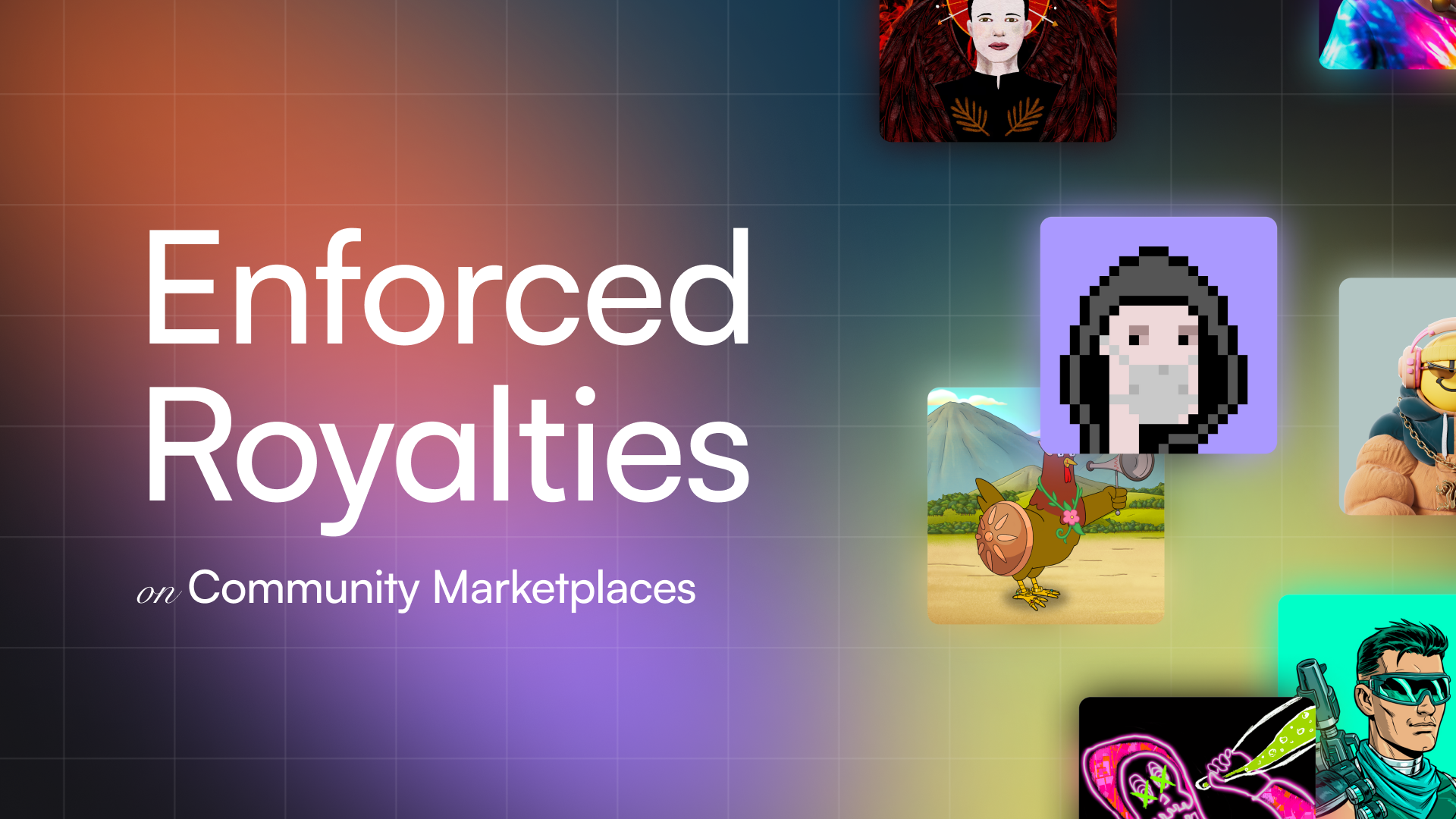How Community Marketplaces Built with Rarible Enforce Royalties on All Sales, Explained
We make sure that the creators get their fees via community marketplaces—no matter where the listings are aggregated from.

Notably, royalties are fully respected on native listings made on community marketplaces and/or Rarible.com. To find out how to create and manage your own marketplace, making it the default go-to place for your community, please refer to this guide.
To reiterate, our stance has not changed: we believe that creators should receive full royalties from their work. We are closely watching the situation.
Community Marketplaces have been a major focus for us this year. Their goal is to empower NFT creators and artists via independent, custom platforms that put their work in the spotlight.
Over the past few months, we’ve built numerous community marketplaces for established collections (such as V1 Punks, mfers, and rektguy, to name a few) and a self-service tool that allows any ERC-721 or ERC-1155 collection owner to create a community marketplace for free in just a few minutes.
Community marketplaces allow creators to list and trade their NFTs on platforms that do not rely on centralized marketplaces, but they also aggregate orders from all major marketplaces in the space to make sure the liquidity is there from day one.
As you might have heard, recently more and more traditional NFT marketplaces have been allowing their users to opt out of paying royalties. It’s a major trend in the space right now, and some adopters have acquired massive amounts of liquidity on the market that way.
However, optional royalties hurt NFT creators, denying them one of their main sources of income. Put simply, this trend is dangerous for the Web3 space.
We can give you a recent example. Earlier this month, a project missed $1,000,000+ worth of royalties in 48 hours just because of this trend. In the absence of creator fees, NFT projects might have very little incentive to keep building.
That’s why Rarible-powered community marketplaces honor royalties on ALL transactions happening via their UI, as long as the conditions specified below are met.
That includes not only the native listings, but also the listings aggregated from the marketplaces —even the ones that allow users to opt out of royalties.
Here’s how that works.
Native listings
Native listings are listings made by a collection’s NFT holders directly on their community marketplace (granted it is powered by Rarible Protocol) or via Rarible.com.
Because Rarible respects royalties, all creator fees on those listings are respected via the smart contract by design.
Listings aggregated from OpenSea
As of now, all royalties are respected on OpenSea, even though the platform had publicly contemplated making royalties optional earlier this month.
We will keep monitoring the situation around OpenSea, and, if its protocol stops respecting royalties, we’ll build a solution to address that.
Listings aggregated from X2Y2
For listings aggregated via X2Y2, we charge the royalty percentage set by the collection owner on that platform.
That means NFT creators have to ensure they have set up their collection on X2Y2 and filled in the ‘creator fee’ field to receive royalties on community marketplace sales.
The royalties are then enforced at checkout, which is technically done via the X2Y2 contract. From our end at Rarible, we ensure that royalties are respected when we call their contract.
Listings aggregated from sudoswap
For listings aggregated through sudoswap NFT AMM protocol, we use Rarible’s royalties registry to extract the royalty percentage.
That means the collection owners have to ensure they have set up their royalties at the Rarible Protocol level (that can be done in 5 easy steps using this instruction) or have EIP-2981 support.
To implement this on the technical side, we built a wrapper — a smart contract that calls other smart contracts (in this case, the Rarible Protocol contracts). So when we charge the buyer of a sudoswap-listed NFT at the checkout, a special wrapper contract sends the royalties to the creator’s wallet.
Listings from LooksRare
In late October, LooksRare announced it will no longer support creator royalties by default. Instead, the platform has vowed to share 25% of the LooksRare Protocol fee with creators and collection owners.
For that, the creators need to have set up a receiving address on the LookRare’s side.
We will continue to monitor the situation, and are currently exploring ways to maximize the capped 0.5% LooksRare creator fee—because ultimately we want the creators to receive the full amount of their royalties.

